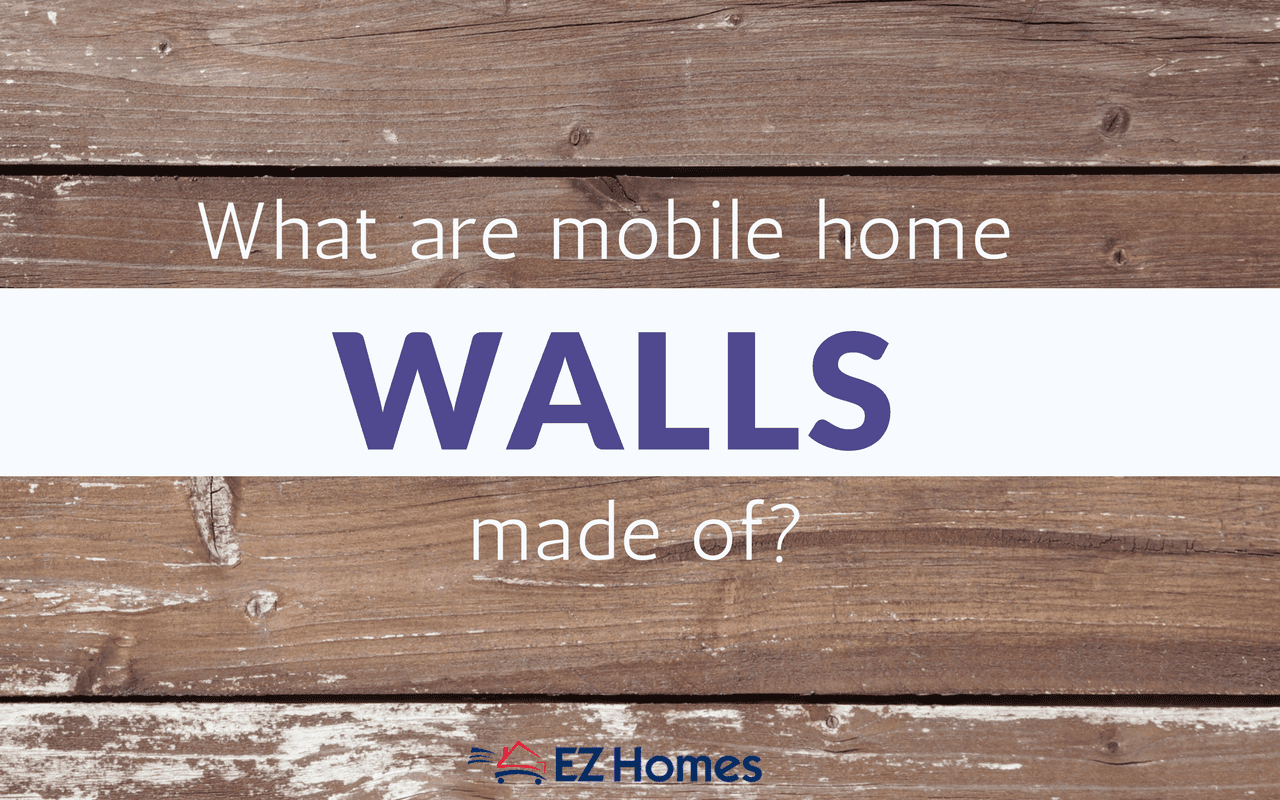Mobile homes differ from stick-built homes in many obvious ways. One difference you may have noticed are your walls. Do you know what makes them different? Maybe this is the first time you’ve thought of it. Well, let’s answer that question, what are mobile home walls made of?

Maybe you’re taking on a new project that involves painting or perhaps repairing a hole in the wall. If so, it’s important to know the materials that make up your walls. In the process, you may discover that your mobile home walls are affecting your health. Read on to find out more.
What are mobile home walls made of?
While not every mobile home is the same, there’s a good chance your walls are either drywall or VOG (vinyl over gypsum). Your mobile home may have walls made out of wood panels, and if so that probably means it’s quite old.
What is vinyl over gypsum?
VOG is a wallpaper-like coating that’s used in the majority of manufactured homes as it’s lightweight and easier to install than drywall. You’ll notice that VOG has a shiny finish with strips running from the floor to the ceiling, which are used to cover the seams. Many mobile homeowners find themselves bothered by these strips and remove them.
While VOG may not look as appealing as drywall, the material has some perks that mobile homeowners will find useful. In addition to being easy to install and lightweight, VOG performs more or less the same as drywall. It’s also an incredibly easy material to maintain, just clean with a damp cloth or even a spray cleaner product.
Mobile home walls differ in look, feel and material, and there are many reasons why you should know the material you’re working with. Below we’ve highlighted three examples of why it’s important you know the composition of your walls.
3 reasons why you should know what your mobile home walls are made of
1. Painting your VOG walls is a different process
Painting your mobile home walls doesn’t differ too much from the regular process, though there are a couple of important things to keep in mind. First of all, you’ll want to clean your vinyl walls before painting. This will help your painted walls to last longer. Cleaning is as simple as scrubbing the walls with a damp rag and dish soap.
Some people decide to remove the batten strips ahead of the paint job. Of course, you can always leave them in place as they won’t disrupt your paint job.
Another thing to keep in mind is what kind of paint you’ll be using. We recommend paint with primer built in for the best coverage possible. One blogger suggests splurging on premium paint, saying cheap paint “just flaked off the walls.”

2. You can spruce up your mobile home walls by adding texture to the walls
Adding texture to your mobile home walls is a great way to make it look, well, more like a home. There are a lot of different ways to go about this process, so we’ll mention just one popular method here.
The most common and effective method of texturing your walls is to cover them with a mix of silica sand and paint. Mix these until they reach the consistency you’re looking for – the more sand you add, the coarser the texture will be. Be careful about mixing too much silica sand and paint at once, though, as the paint might dry between applications. Another helpful tip is to ask your sand supplier to machine-mix the sand and paint for you. You can check out this video for a more in-depth look at how to texture your walls.
3. New manufactured homes have volatile organic compounds in the walls
VOCs are considered possible carcinogens, irritants, and toxicants. According to an article on Hunker, new manufactured homes have “unhealthy” levels of VOCs which can build up over time. One study found that VOCs are related to the onset and exacerbation of asthma in 126 homes in Detroit, Michigan.
One irritant found in mobile homes is formaldehyde. Formaldehyde is a “colorless, strong-smelling gas,” and was used to make walls, cabinets, and furniture in trailers and mobile homes in Louisiana and Mississippi. A study by the CDC states that common symptoms of individuals exposed to formaldehyde include a sore throat, cough, scratchy eyes and nosebleeds.
Fresh air is one of the best combatants against VOCs. Make sure you open your windows when the weather permits, or perhaps invest in a dehumidifier that can run during the colder months. It’s also a good idea to keep the temperature inside your mobile home at the lowest comfortable setting. Taking these precautions is especially important if you have asthma. Click here for even more mobile home ventilation tips.

Now you’re ready for your next wall project!
It’s helpful to note that while many mobile homes walls are drywall or vinyl, not every home is made the same. Once you can answer, “what are mobile home walls made of?” you’ll be ready for your next remodeling project.



